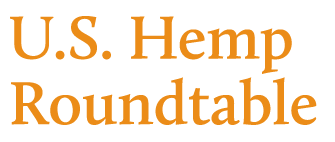Latest
Canadian-US Hemp Grain Market is Heating Up
PanXchange Blog
Before CBD was a product category, hemp grain, oils, and protein were in high demand. Driven by consumer demand for plant-based food-products, US imports of hemp grain peaked in 2016 at a volume of 38,594,227 lbs. Since 2017 grain derivatives, namely hemp seed oil and protein, have supplanted raw grain. According to our review of US Census trade data, hemp oil imports grew by 262%, and hemp protein grew by 40.6%, respectively, from 2017-2019. In 2019 alone, hemp grain and resulting products account for 76,554,259 USD in cross border sales. As this sector of the market matures across North America, operators across the supply chain must be mindful of market forces’ increasing role. More specifically, the price implications of servicing burgeoning markets, the competitiveness of substitute products, and short term currency volatility amplified by COVID-19 will all impact prices paid to producers and market opportunities.
Following the collapse of the South Korea-Canadian hemp trade deal of 2017, the US has remained the primary recipient of Canadian hemp grains and resulting derivatives. As such, US importers have played a key role in dictating market prices. Previously a major regulatory burden, the affirmation of Manitoba Harvest’s (now owned by Tilray) GRAS application concerning hemp grains by USDA in 2018 further bolstered local and international food ingredient manufacturers’ interest. While this is encouraging news, Canada is also a major production hub for peas and lentils, which are substitutes for plant-based food ingredients, and presently more cost-effective ingredients than hemp grain derivatives. This relationship has resulted in regional price volatility of hemp grains, thus increasing interest in US points of sale.
US producers, eager to cash in on the demand and relatively high prices, entered the market. In 2019, total US hemp grain production reported to FSA reached 25,463.27 acres with an associated sale price equivalent to offers in Canada. These high prices were predominantly spot-purchases and largely driven not by field losses but rather a unique issue that impacts hemp growers on both sides of the border: maintaining food-grade quality standards at the time of harvest through to finished product. By some accounts, upwards of 20% of the US 2019 hemp grain harvest failed to be utilized due to this issue and allowed prices to remain stagnant in the 2020 season.
As of September 2020, grain prices had remained relatively the same in the US as 2019, as most hemp grain is grown this year on fixed-prices and COVID’s impacts. While demand for dehulled hemp hearts and pressed oilseed products is increasing, US-supply side actors should be cognizant of the depressed Canadian dollar’s impact on prices north of the border. This week, CAD to USD is trading at 1:1.3, and Canadian prices are effectively .23-.25 USD lower than that of their US competitors. Simultaneously, the USD is sliding, and US importers’ relative purchasing power consequently decreased. However, even when accounting for logistics, such a significant decline in prices puts the cost-savings of buying “American-made” hemp at a crossroads.
These market impacts will continue to present challenges through the remainder of the year. Due to the reliance on exporting to the US market, Canadian producers have more inclination to provide discount prices to remain competitive. Still, the decline of the CAD won’t allow producers to short the market too drastically. At the same time, these market forces will allow US producers to articulate effective prices to maintain and possibly grow, market share in the 2021 season. Most importantly, these price implications will likely reduce substitute products’ attractiveness in the near term, thus offering the necessary growth potential for hemp to play a larger role in the plant-based food ingredients market.










